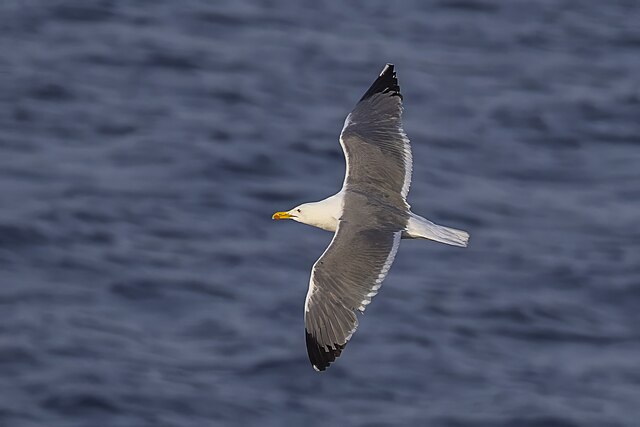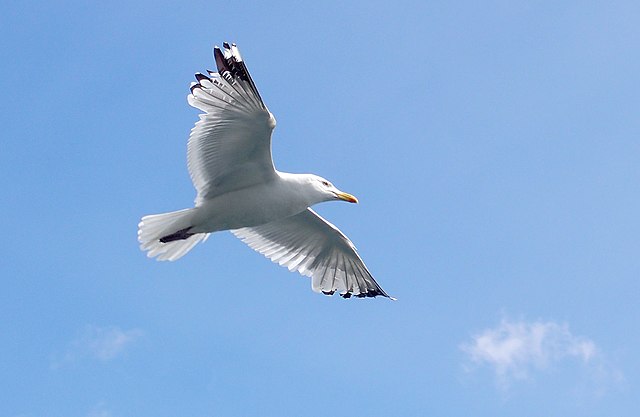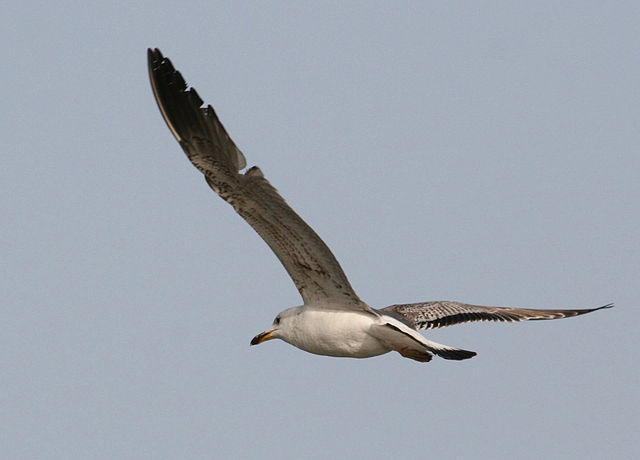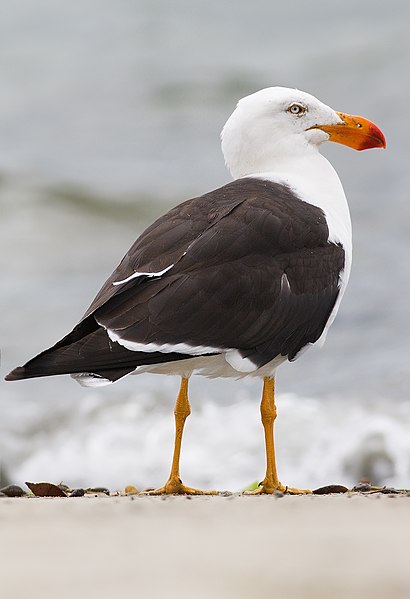The yellow-legged gull is a large gull found in Europe, the Middle East and North Africa, which has only recently achieved wide recognition as a distinct species. It was formerly treated as a subspecies of either the Caspian gull L. cachinnans, or more broadly as a subspecies of the herring gull L. argentatus.
The genus name is from Latin Larus which appears to have referred to a gull or other large seabird, and the species name honours the German zoologist Karl Michahelles.
Yellow-legged gull
adult, Malta
juvenile, Malta
Yellow-legged gull in Porto, Portugal
Gulls, or colloquially seagulls, are seabirds of the family Laridae in the suborder Lari. They are most closely related to the terns and skimmers and distantly related to auks, and even more distantly to waders. Until the 21st century, most gulls were placed in the genus Larus, but that arrangement is now considered polyphyletic, leading to the resurrection of several genera. An older name for gulls is mews, which is cognate with German Möwe, Danish måge, Swedish mås, Dutch meeuw, Norwegian måke/måse, and French mouette, and can still be found in certain regional dialects.
Gull
Juvenile of Armenian gull in flight, flying over Lake Sevan
The Pacific gull is a large white-headed gull with a particularly heavy bill.
Swallow-tailed gulls are endemic to the Galapagos Islands.








